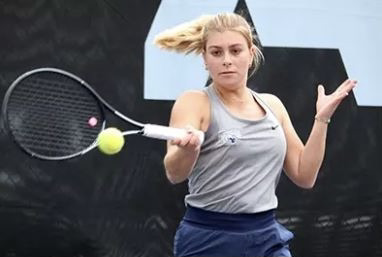Bhangra Beat Brings Indian Style Dance Entertainment
3 min readBy MADELINE McDONALD
Bhangra Beat made an upbeat and energetic return to the spotlight on Nov. 17 in the Anderson Center.
The eighth annual competition, originated by Framar, the International Living Community, included four bhangra teams from neighboring schools in Virginia. Groups from Virginia Commonwealth University, William and Mary, James Madison University and Virginia Tech brought smiles and excitement as they danced their hearts out to catchy Punjabi music. The University of Mary Washington’s Eagle Bhangra did not compete.
This year, Bhangra Beat was held in the Anderson Center for the first time. Framar co-president Heidi Westervelt, a senior history major, began inquiring about the space almost a year ago. The new venue was exciting, but came with its own challenges. “It was nicer, but we had to learn how to work with the new space,” said Westervelt.
Organizers had to figure out how to incorporate new additions, such as dance studios and locker rooms the dance teams could use. Additionally, they had to work around the basketball schedule as well as the schedules of other bhangra competitions on the east coast.
Turnout for the competition did not disappoint. Families and friends from UMW, as well as from the competing schools, filled up three entire sections of the stands. They cheered as Eagle Bhangra took the floor to begin the event with an exhibition dance.
Dressed in bright orange, green, blue and magenta, they whirled across the floor and revved up the audience for what was to come.
From there, the four competing teams were each given the chance to showcase their talents. All four teams were a riot of color, radiating excitement and flashing bright smiles that showed just how happy they were to be there.
Between performances, dancers from different schools introduced the audience to bhangra. Some described their clothing, such as the fan-shaped turla, a headpiece that male dancers wear, and the chunni scarf female dancers wear. Others introduced items used in the dance, such as the khunda, a staff, and the chhika, a wooden instrument used to make clapping sounds.
The audience was also treated to raffle prizes between performances. They had the chance to win bhangra t-shirts as well as slightly larger prizes, such as a gift card to Cold Stone.
Each teamwas outstanding, but the one that stood out from the rest was VCU. Their group, made up of only women, was noticeably in sync with each other, dancing together like it was the most natural thing in the world.
Each aspect of their performance was precise and planned out, down to the placement of each dancer in their yellow, red, blue and green costumes. Ultimately, VCU took the first place prize, with William and Mary coming in second.
Preparations are already in the works for next year’s Bhangra Beat. Westervelt hopes to continue to use the Anderson Center and expand the competition’s reach to include a team from Washington D.C. Hopefully, they will continue to be able to share bhangra with even more people.



